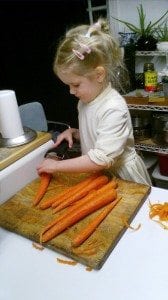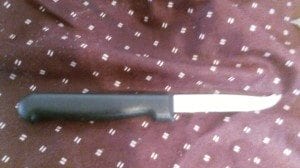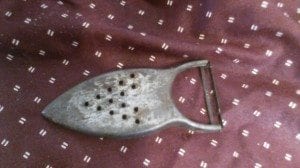One of the things that we really enjoy doing with the children is cooking. They have been “helping” in the kitchen since they were old enough to sit in the highchair and I get a private chuckle every time we go to the pediatrician and she reminds me that “the kitchen is dangerous and they should stay out.”
The kitchen is dangerous but that just means that they need to learn safety rules not that they should be banished.

Su peeling carrots
Here are a few things we have learned.
If at all possible “helping” should be actually helpful and not make-work. They can spot the difference and listen much better when they feel like what they are doing really contributes.
In the beginning their helping will probably slow you down but after some time and training it will be a real time-saver. F is big enough now and knows the safety rules well enough that I even get him to stir sauces and such on the stove. Su isn’t there yet, but in another year she probably will be.
Start with something simple. When F was about a year old we would put him in his highchair and give him cloves of garlic to peel, onions to peel and lots of tastes of whatever we were cooking. He tasted all kinds of things, and would ask for the ones he liked best. Peppercorns were a favorite for some time!
Talk a lot. I give lots of explanations of what we are doing, what we will do next and so on. By the time the children are three or so, they know that if I am making cookies I will need a cookie sheet, if we are making bread pans will need to be greased and so on. Yes, they will ask the same questions many times, but that is how they learn.
Have appropriate and sturdy things to stand on. Since our kitchen is narrow I prefer that they put their little stool at the end of the island and work at an angle to me. The stool is large enough for two children to stand on, wider at the base than the top, and made of wood so it is heavy enough not to slide if they lean forward. If we something else for someone to stand on we use a kitchen chair as ours are fairly wide.
Stirring things: teach them to hold the bowl with one hand and try to use smaller bowls when you can as they are easier for little hands to hold. My largest mixing bowl has a wide rim (about 1/2 an inch) and they find that a little awkward to hold.
The stirring end of the spoon should always stay in the bowl. It is not to be licked until the cooking is over.
Hands should also stay out of the bowl except in certain cases where we are mixing things with our fingers.

The children's first knife for kitchen work

Thi combination peeler and grater is easy for them to hold
The most important thing about all of this is to enjoy the time you spend in the kitchen together and to give appropriate tasks to each child. You must look at each one as an individual for strengths and weaknesses. F is doing several things at almost 5 that I doubt Su will be allowed to. He is naturally cautious and safety conscious and she is much too prone to rushing into things and being distracted to be a safe in the kitchen as he.





